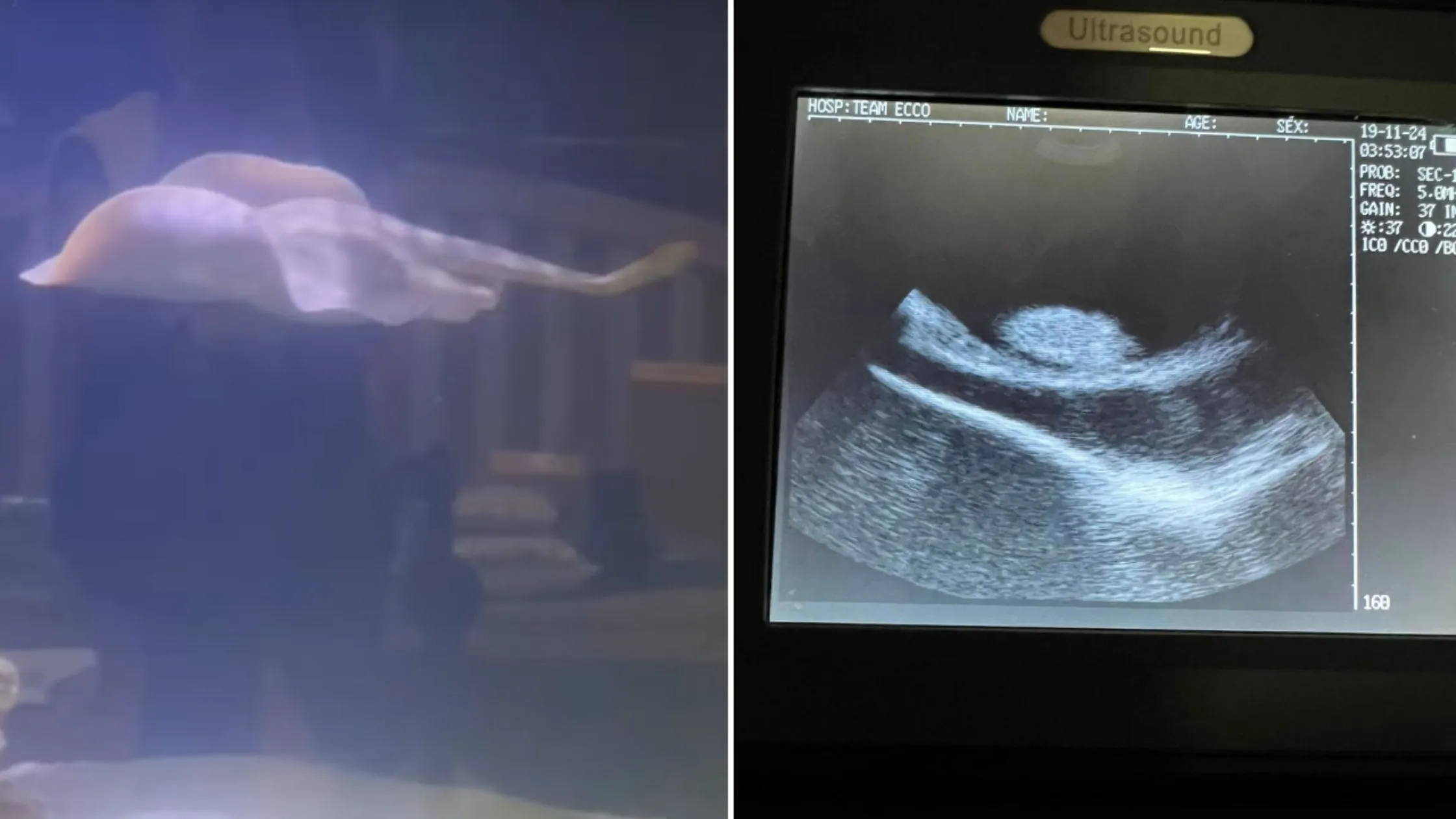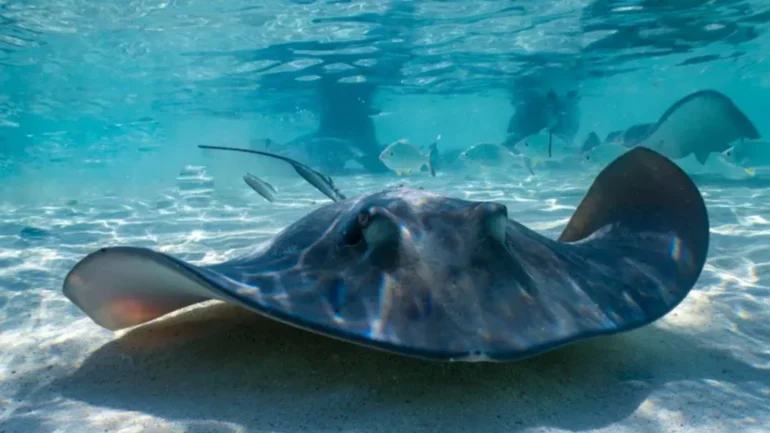The NC Aquarium Pregnant Stingray story has sparked important discussions about how stingrays reproduce after it was revealed she has a rare reproductive disease instead of being pregnant.
People were amazed by NC Aquarium Pregnant Stingray’s “virgin pregnancy,”. This is a rare occurrence where a female can give birth without a male’s help.
But after a long time of guessing and watching her, the aquarium said Charlotte has a disease that’s hurting her reproductive system.
The Initial Announcement of Charlotte’s Pregnancy
In February 2024, the North Carolina Aquarium and Shark Lab shared news about Charlotte. She was said to be pregnant after not mating with a male stingray for almost eight years.
NC Aquarium Pregnant Stingray news caused a lot of interest and guesswork, with the aquarium suggesting that Charlotte might have reproduced through parthenogenesis, a rare method where a female can fertilize her own eggs.
Theories on How Charlotte Got Pregnant
NC Aquarium Pregnant Stingray sparked many theories. First, the aquarium thought she might have mated with sharks in her tank, but this idea was doubted because sharks and rays have different reproductive systems, making it hard for them to mate successfully.
Another idea was that she stored sperm from past mates, but since she hadn’t seen any male stingrays in years, this seemed unlikely.

The most likely theory now is that Charlotte reproduced asexually through parthenogenesis, where she developed embryos without mating.
This is rare but has been seen in some stingrays and sharks, making Charlotte’s case unusual.
The Anticipation Builds
When NC Aquarium Pregnant Stingray was released in February 2024, it quickly became a worldwide sensation.
People were curious how she could get pregnant after so long without mating. Social media was filled with theories and discussions, and even a skit on *Saturday Night Live* made it even more popular.
This led to more visitors at the aquarium, with long lines of fans waiting to see Charlotte.
The Waiting Game
After the NC Aquarium Pregnant Stingray was announced, the North Carolina Aquarium kept the public updated, building excitement.
However, as the due date passed without a baby, confusion and disappointment grew. Originally thought to be born in February, the delay made people question if she could have babies.
The aquarium thought she might have been born without a father, but no pups appeared, making people doubt her ability to have babies.
Eventually, it was discovered that Charlotte had a rare disease that made her pregnancy difficult, changing the focus to her health instead of her potential to have babies.
This unexpected change made fans sad, as the story of a miracle birth turned into a medical mystery.
The Unexpected Twist
In late May 2024, the Aquarium and Shark Lab in Hendersonville, North Carolina, announced that Charlotte, a stingray thought to be pregnant, was actually suffering from a rare reproductive disease.
This news came after months of excitement about her supposed pregnancy, which had attracted a lot of attention.
The aquarium apologized for not sharing this information sooner and promised to work with experts to help Charlotte and learn more about stingray reproductive health.
The Aquarium’s Response
The Aquarium & Shark Lab by Team ECCO shared their sadness and surprise about Charlotte the stingray’s rare reproductive disease.
They said NC Aquarium Pregnant Stingray’s health is their main concern and they’re working with experts to learn more about her and find treatments.
They hope Charlotte’s situation helps science and could help other rays too, even though there’s not much known about her disease.
They thanked everyone for their support and asked for patience and respect for Charlotte and her care team.
Limited Research on Charlotte’s Disease
The North Carolina Aquarium faced significant challenges due to the lack of existing research on reproductive diseases in round rays, particularly in understanding the specific condition affecting Charlotte.
This scarcity of data made it difficult for the aquarium’s staff to accurately diagnose and treat her, as they had limited precedents to guide their medical decisions.
In response, the aquarium has actively sought additional information by collaborating with veterinarians and specialists who have expertise in marine biology and reproductive health.
They are conducting tests and gathering diagnostic data to better comprehend Charlotte’s disease.
The aquarium hopes that by documenting NC Aquarium Pregnant Stingray’s case and sharing their findings, they can contribute to the broader scientific knowledge surrounding reproductive health in stingrays, ultimately benefiting other marine species facing similar health issues in the future.
NC Aquarium Pregnant Stingray news was a surprise but ended in tragedy, showing how complex marine reproduction is. Her story has made people more aware of the need to protect stingrays and other sea creatures.

